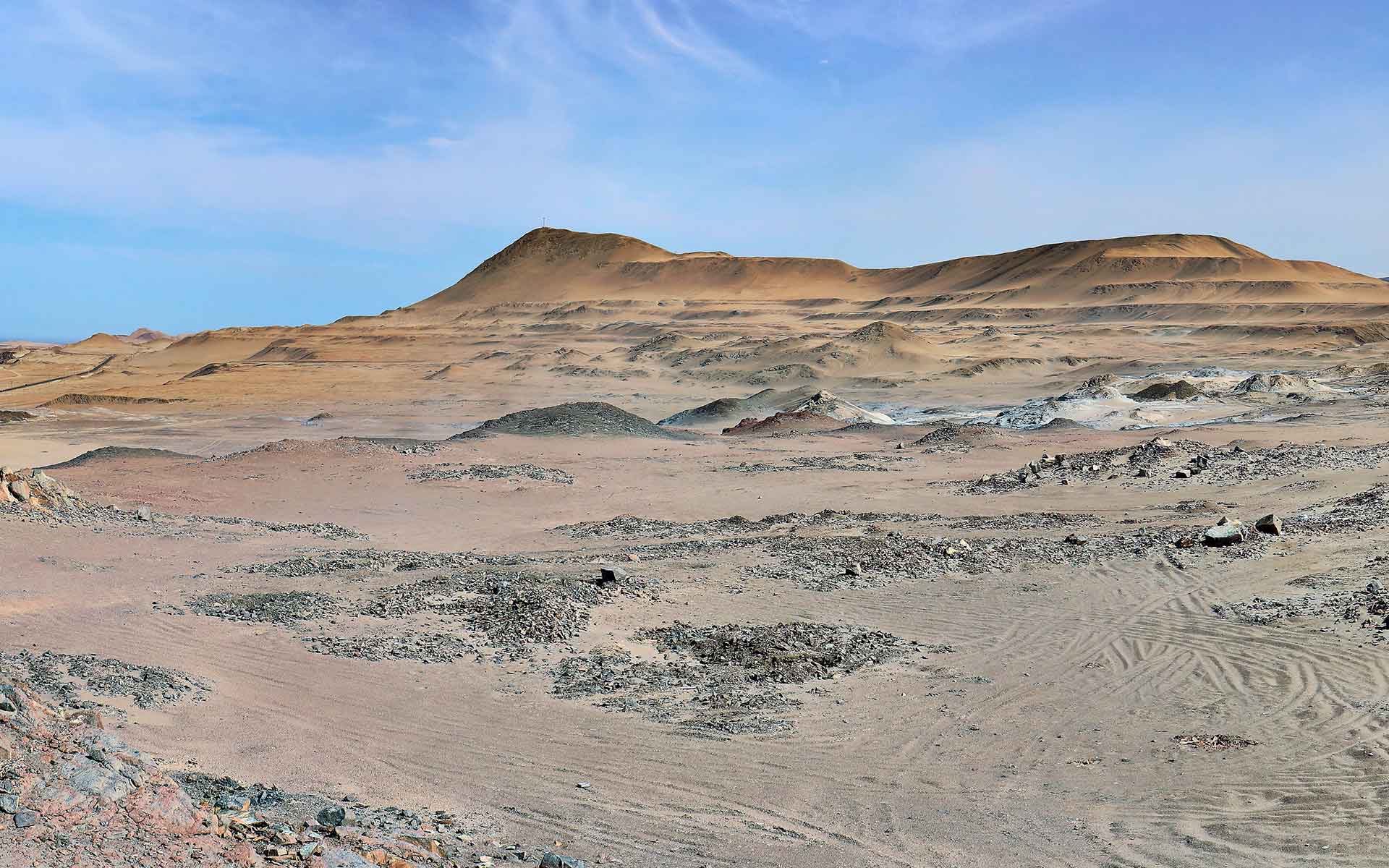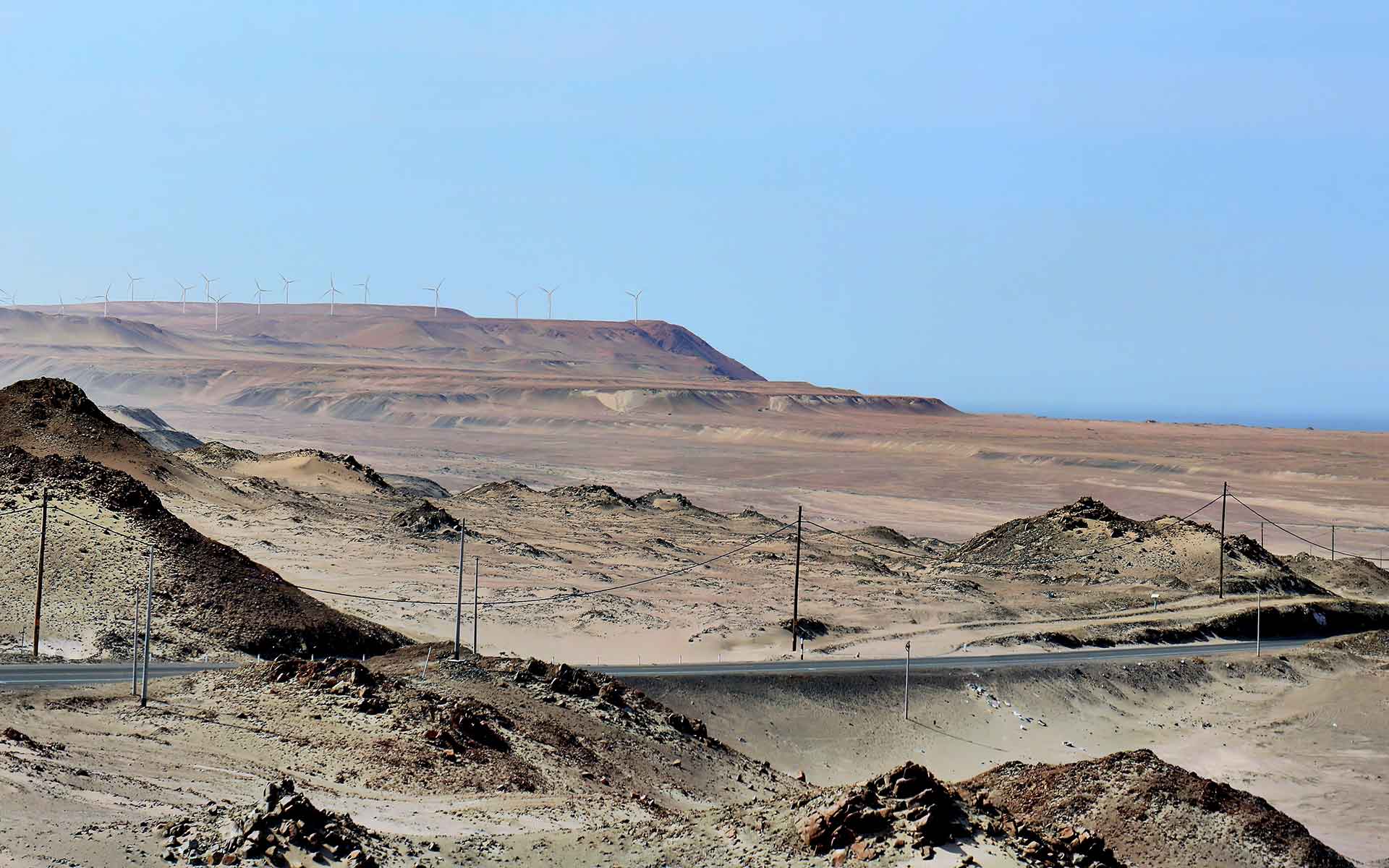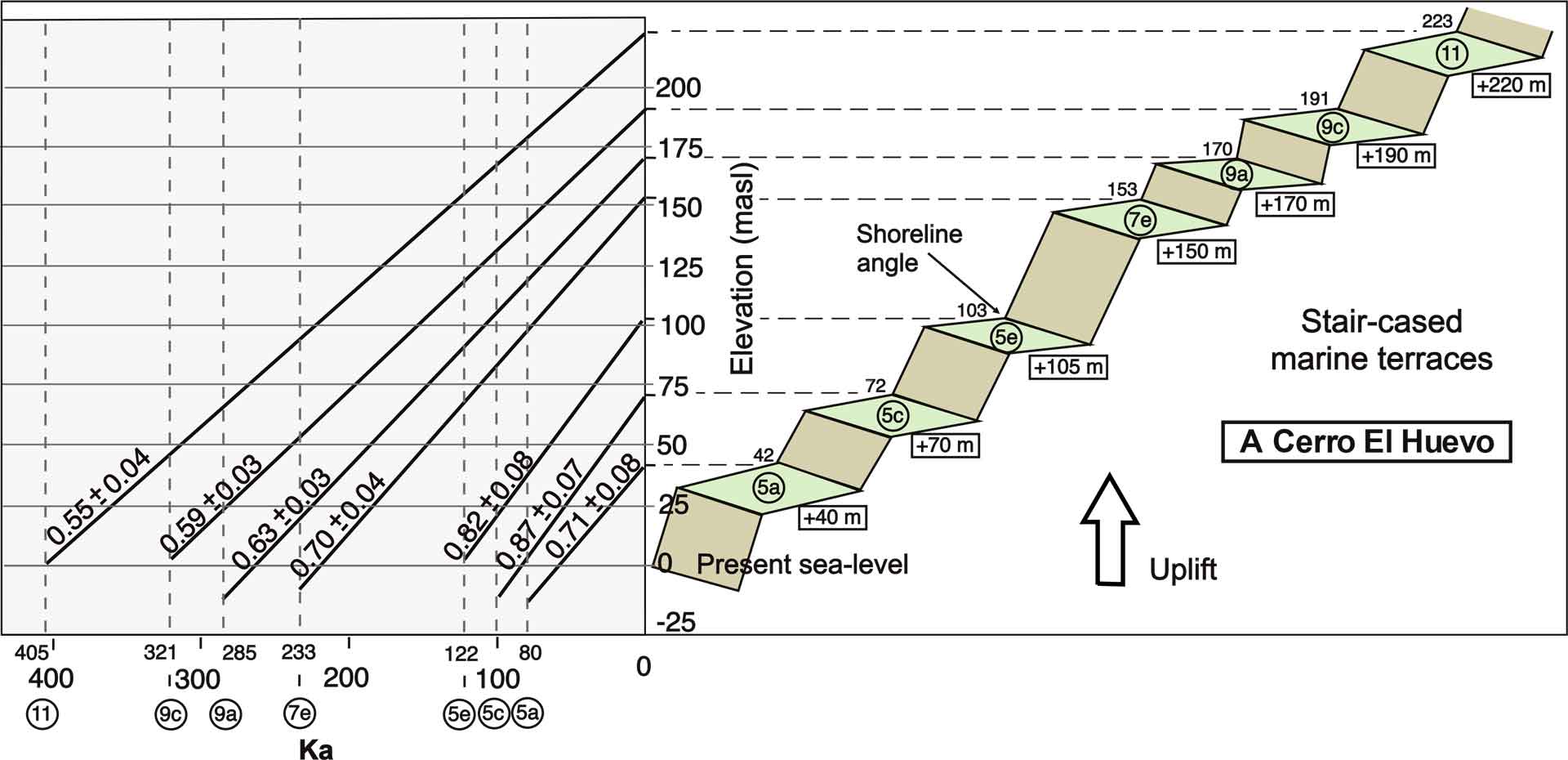
Shows eight marine terraces of Cerro El Huevo. These marine terraces provide important information on the tectonic uplift processes during the Quaternary in the area.
Geological Period
Miocene to Pleistocene
Main geological interest
Tectonics
Geomorphology and active geological processes
Location
Ica, Nazca, Peru
15°21’21”S, 075°09’04”W
Shows eight marine terraces of Cerro El Huevo. These marine terraces provide important information on the tectonic uplift processes during the Quaternary in the area.
Exceptional site showcasing the influence of the Nazca-Ridge on the continuous uplift of the western edge of the Central Andes.
Marine terraces of San Juan de Marcona are exceptional because they have a higher regional uplift rate than other areas on the west coast of South America. The average uplift rate for the west coast of South America is about 0.16 m kyr-1 (Freisleben et al., 2021). However, the San Juan de Marcona area has an uplift rate varying between 0.44 and 0.87 m kyr-1, increasing over the last 800,000 years (Saillard et al., 2011). Thus, this area holds an exceptional record of the tectonic history of the South American forearc associated with the subduction of the Nazca Ridge.
- Geological description
Bay of San Juan de Marcona is renowned for its extraordinary twin sequences of well-preserved marine terraces that exhibit 20 staircased levels. These terraces are spectacular witnesses of the complex interaction between past sea-level variations and tectonic uplift of the coast. Each level corresponds to a paleo-sea-level position, now emerged and preserved in the landscape. San Juan de Marcona is located on the southern coast of Peru above the subducted segment of the Nazca Ridge. The area is characterized by significant coastal tectonic activity and major normal faults cutting across the coastal region. The two famous sectors where the terraces develop are Cerro El Huevo and Cerro Tres Hermanas, forming hills and peninsulas, but separated by ~8 kilometers and the bay.
In recent decades, scientific efforts have been made to determine the ages of these terraces, leading to more reliable results using cosmogenic nuclides such as 10Be. For example, the terrace now at an elevation of 220 meters formed 400 ka ago. The ages and present-day elevations of the marine terraces are indicative of variable and cumulative uplift through time during the interseismic period. Coastal tectonics in the Central Andes reflect the interaction of crustal tectonics of the upper plate with the seismic cycle of the subduction interface.
- Scientific research and tradition
Marine terraces of San Juan de Marcona are a natural laboratory for understanding tectonics at active margins. From geomorphological or climatic interpretations (Broggi, 1946) to the use of geochronology uplift rates were determined for the last 125 kyr (Hsu, 1988; Ortlieb and Macharé, 1990) and 800 kyr (Saillard et al., 2011).
- Reference
Broggi, J.A. (1946) ‘Las terrazas marinas de la bahía de San Juan en Ica’, Boletín de la Sociedad Geológica del Perú, 19, pp. 21–33.
Freisleben, R. et al. (2021) ‘Marine terraces of the last interglacial period along the Pacific coast of South America (1°N–40°S)’, Earth System Science Data, 13(6), pp. 2487–2513. Available at: https://doi.org/10.5194/essd-13-2487-2021.
Hsu, J.T.J. (1988) Emerged quaternary marine terraces in southern Peru: Sea level changes and continental margin tectonics over the subducting Nazca Ridge. Ph.D. Thesis. Ithaca, NY (US); Cornell Univ. Available at: https://www.osti.gov/biblio/7164193.
Macharé, J. and Ortlieb, L. (1992) ‘Plio-Quaternary vertical motions and the subduction of the Nazca Ridge, central coast of Peru’, Tectonophysics, 205(1), pp. 97–108. Available at: https://doi.org/10.1016/0040-1951(92)90420-B.
Ortlieb, L. and Macharé, J. (1990) ‘Geocronologia y morfoestratigrafia de terrazas marinas del Pleistoceno superior : el caso de San Juan-Marcona, Peru’, Boletín de la Sociedad Geológica del Perú, 81, pp. 87–106.
Saillard, M. et al. (2011) ‘Andean coastal uplift and active tectonics in southern Peru: 10Be surface exposure dating of differentially uplifted marine terrace sequences (San Juan de Marcona, ~15.4°S)’, Geomorphology, 128(3), pp. 178–190. Available at: https://doi.org/10.1016/j.geomorph.2011.01.004.
- Author(s)
Carlos Benavente Escobar.
Instituto Geológico Minero y Metalúrgico – INGEMMET. Perú.
Bilverto Zavala Carrión.
Instituto Geológico Minero y Metalúrgico – INGEMMET. Perú.
Igor Astete Farfán.
Instituto Geológico Minero y Metalúrgico – INGEMMET. Perú.
Laurence Audin.
Instituto de Investigación para el Desarrollo – IRD. Perú.
Marianne Saillard.
Instituto de Investigación para el Desarrollo – IRD. Perú.


